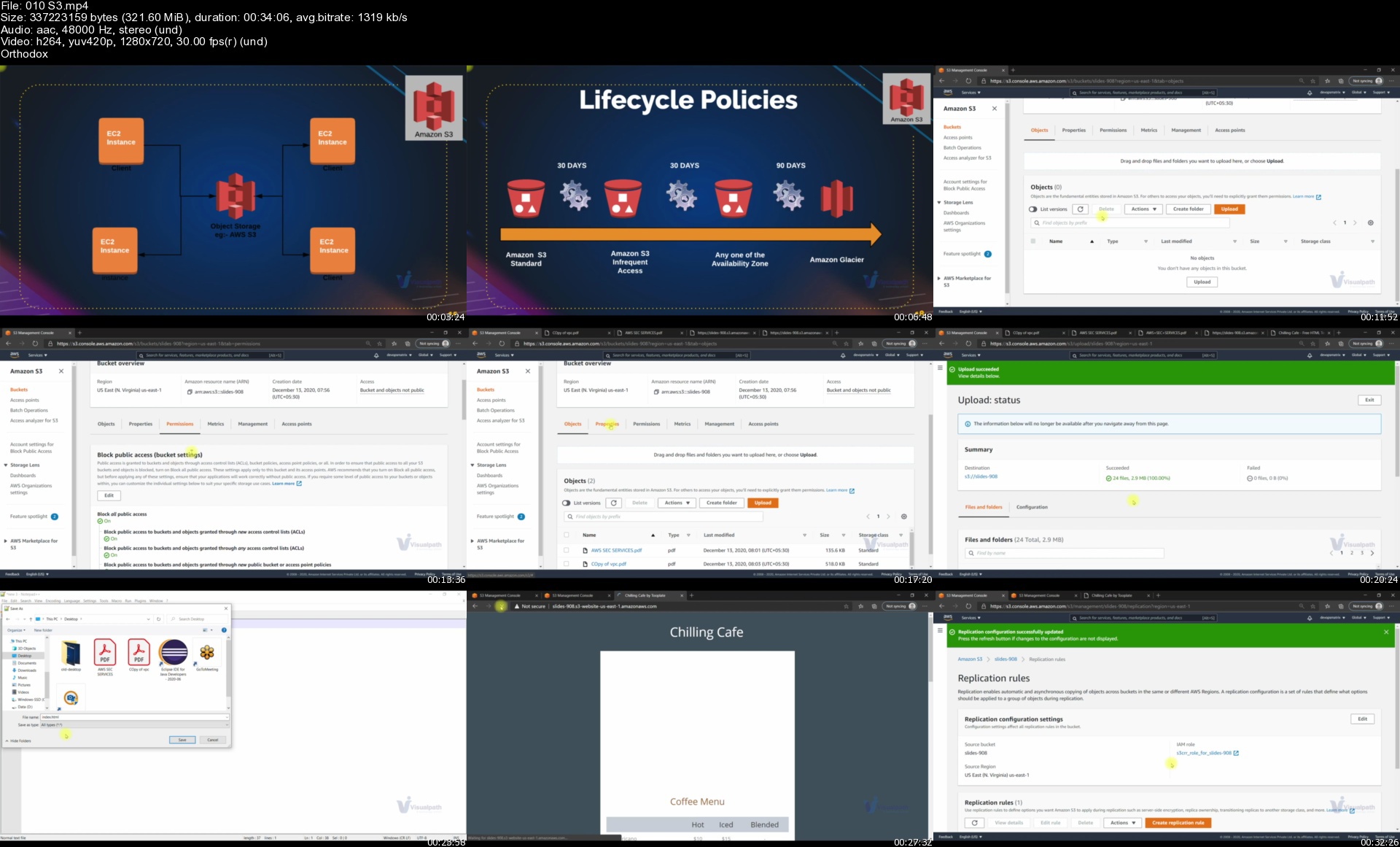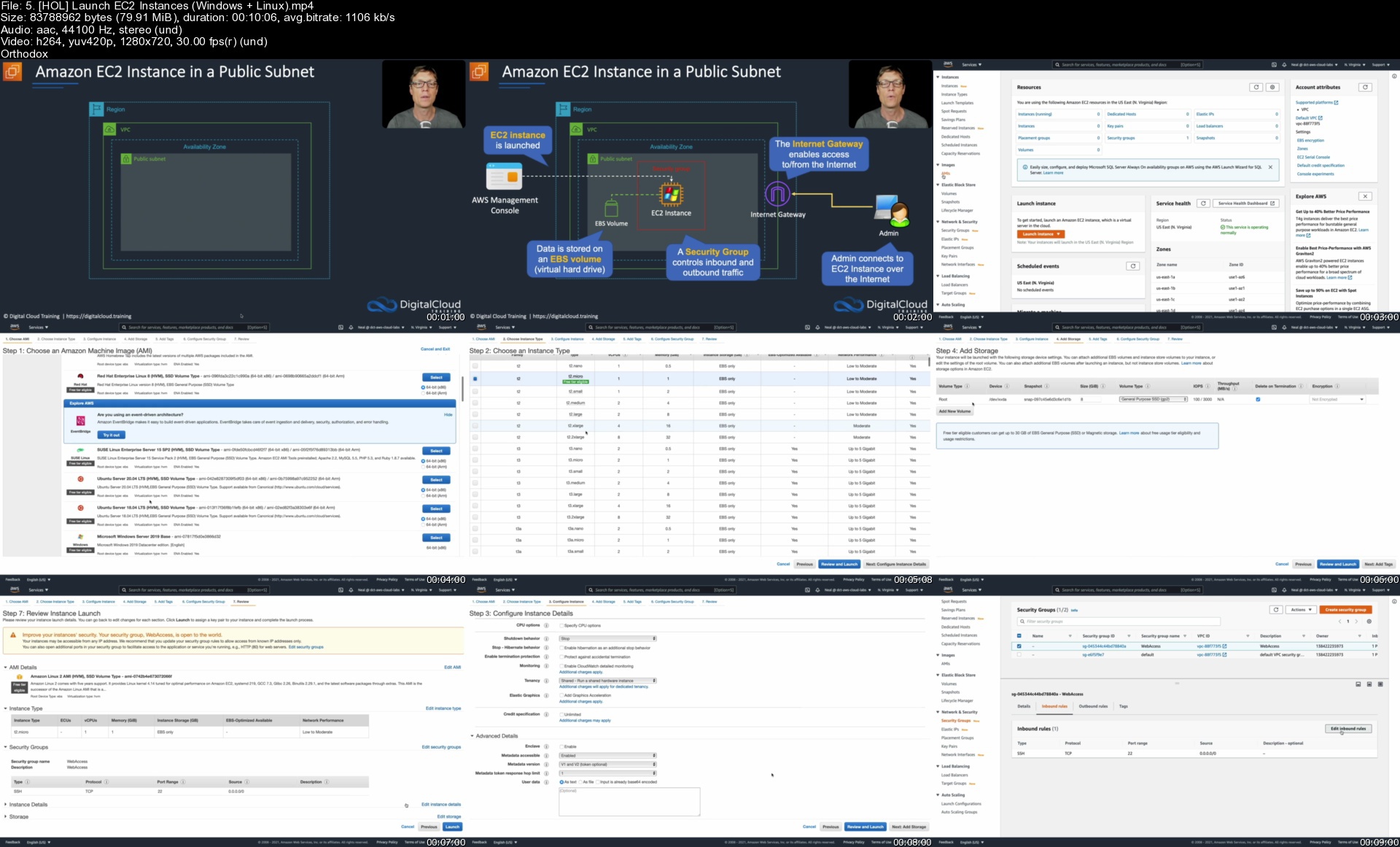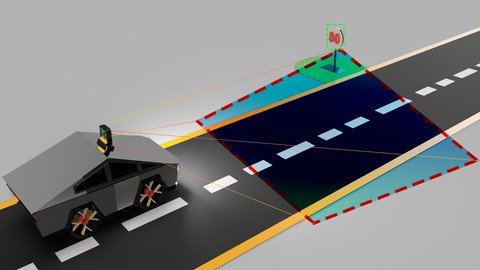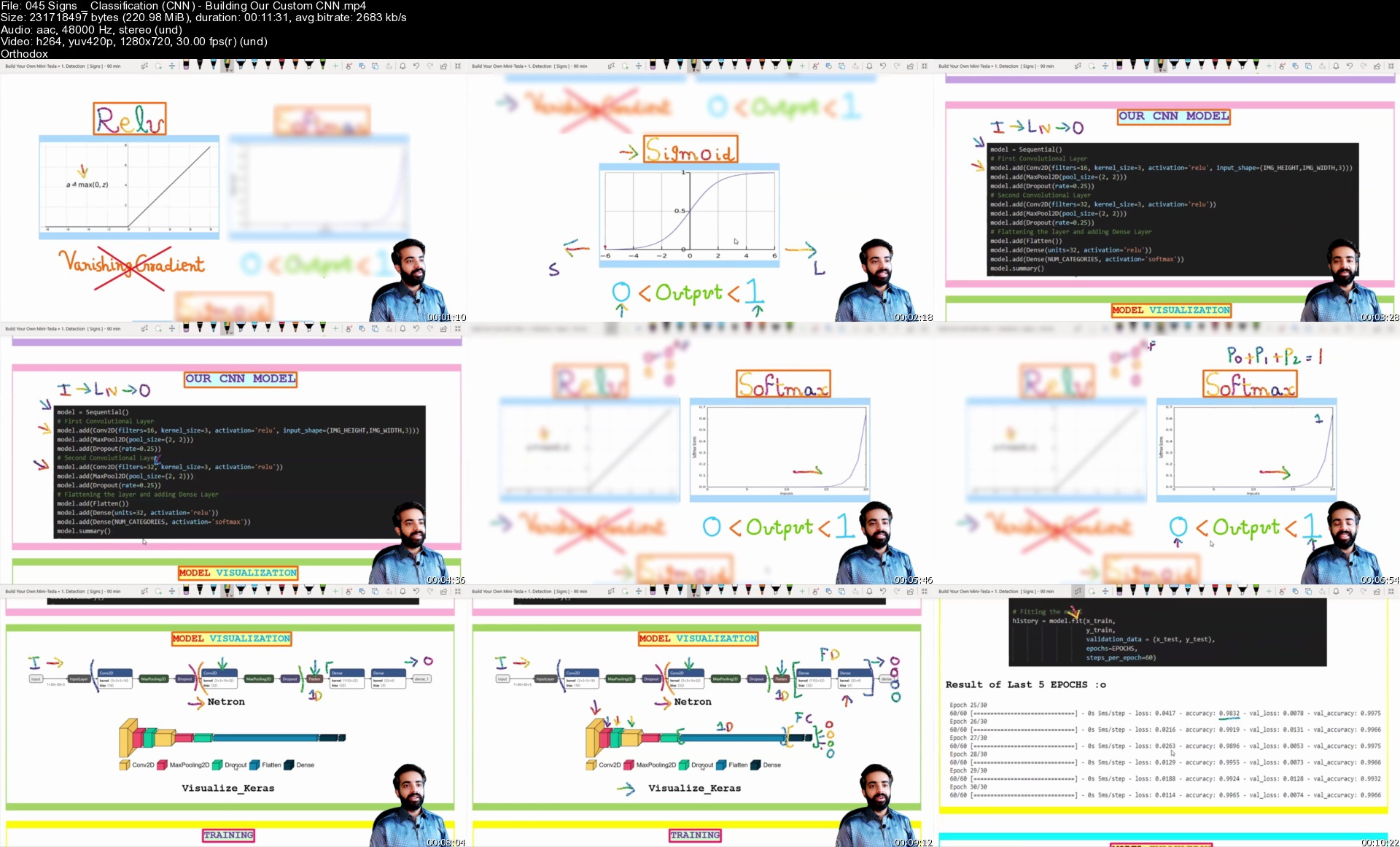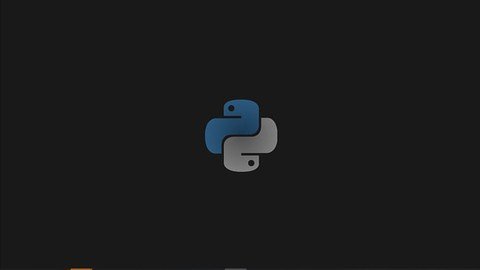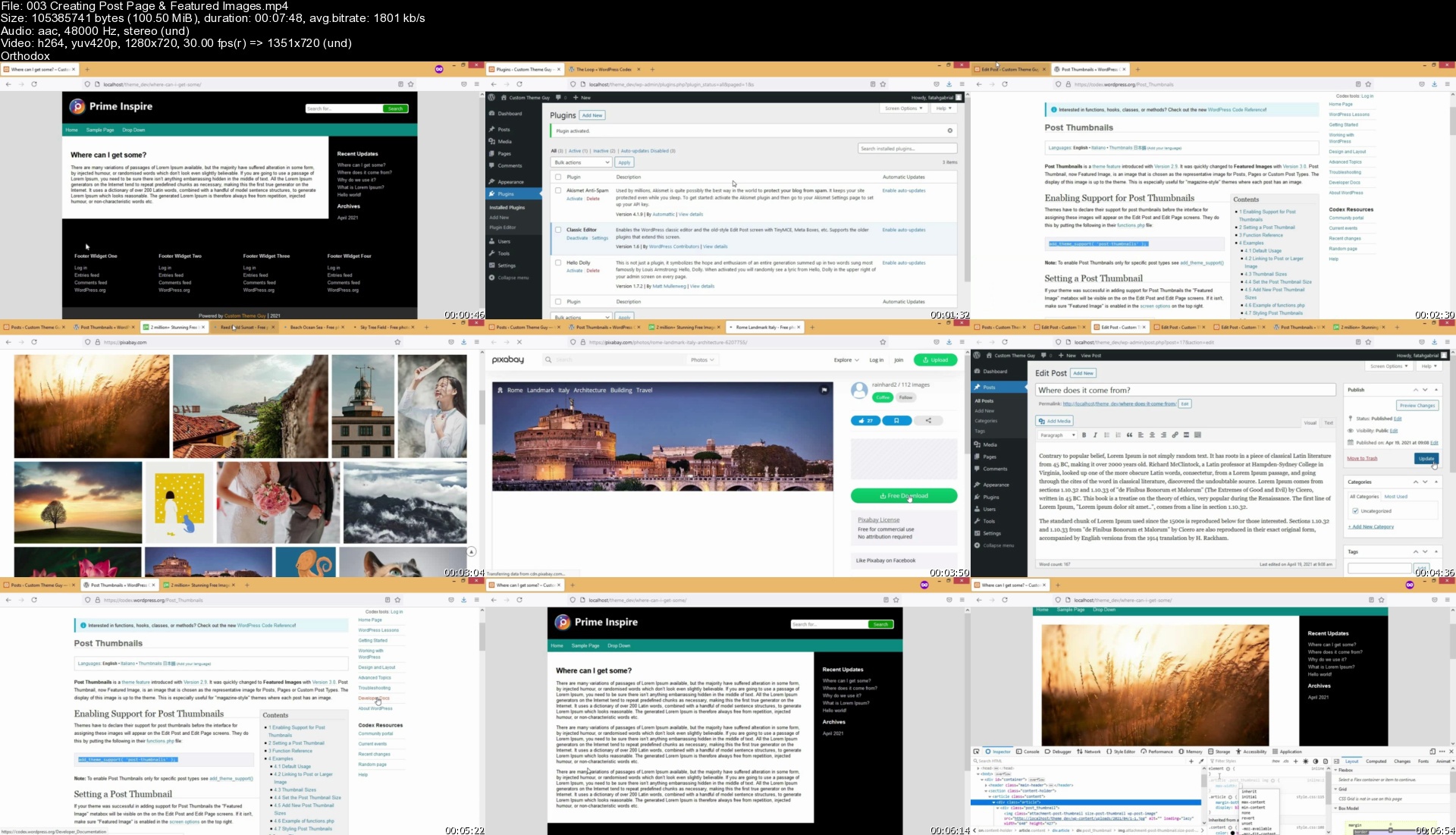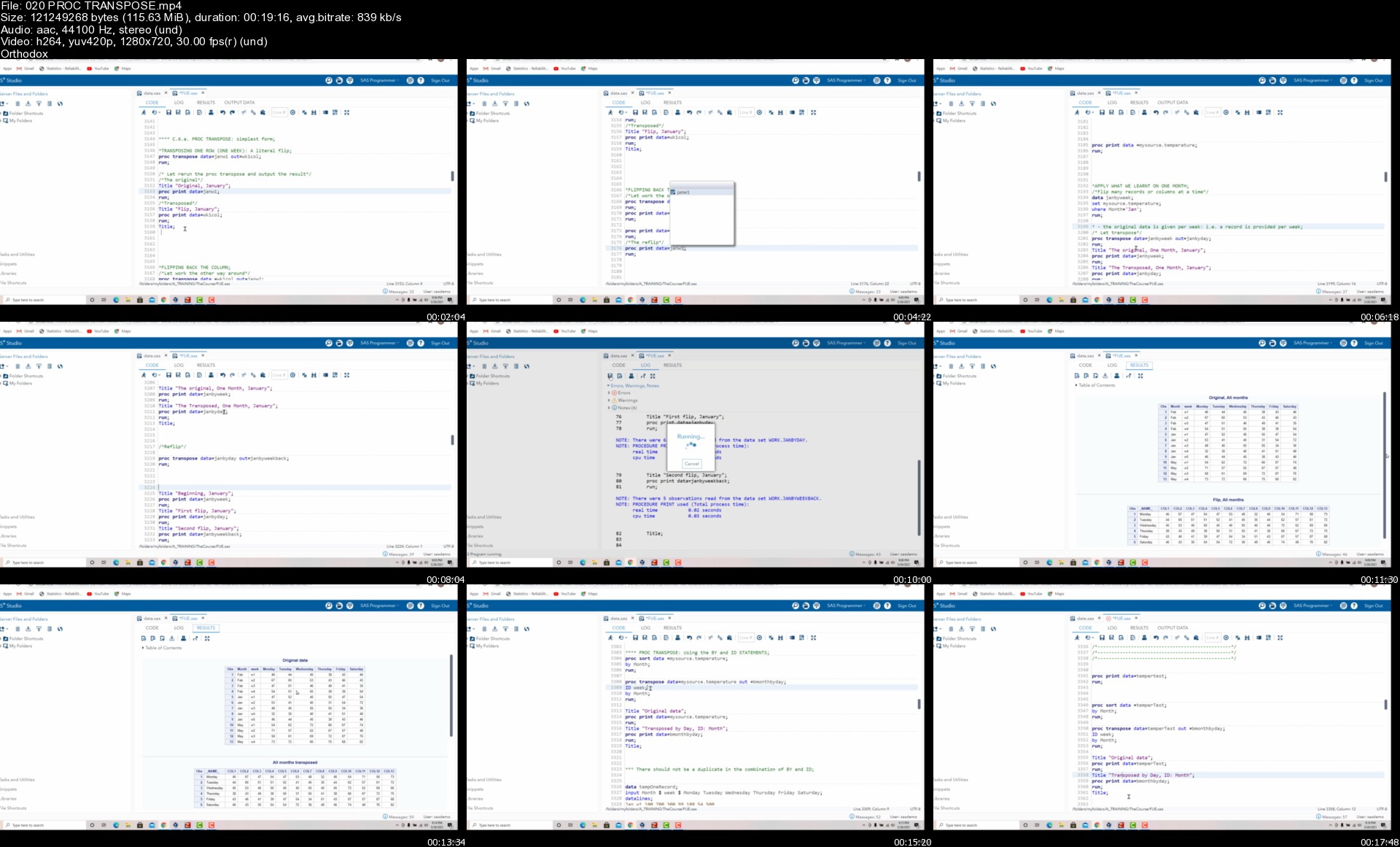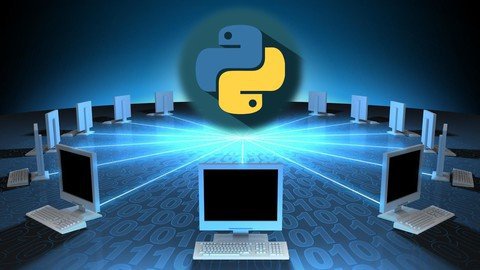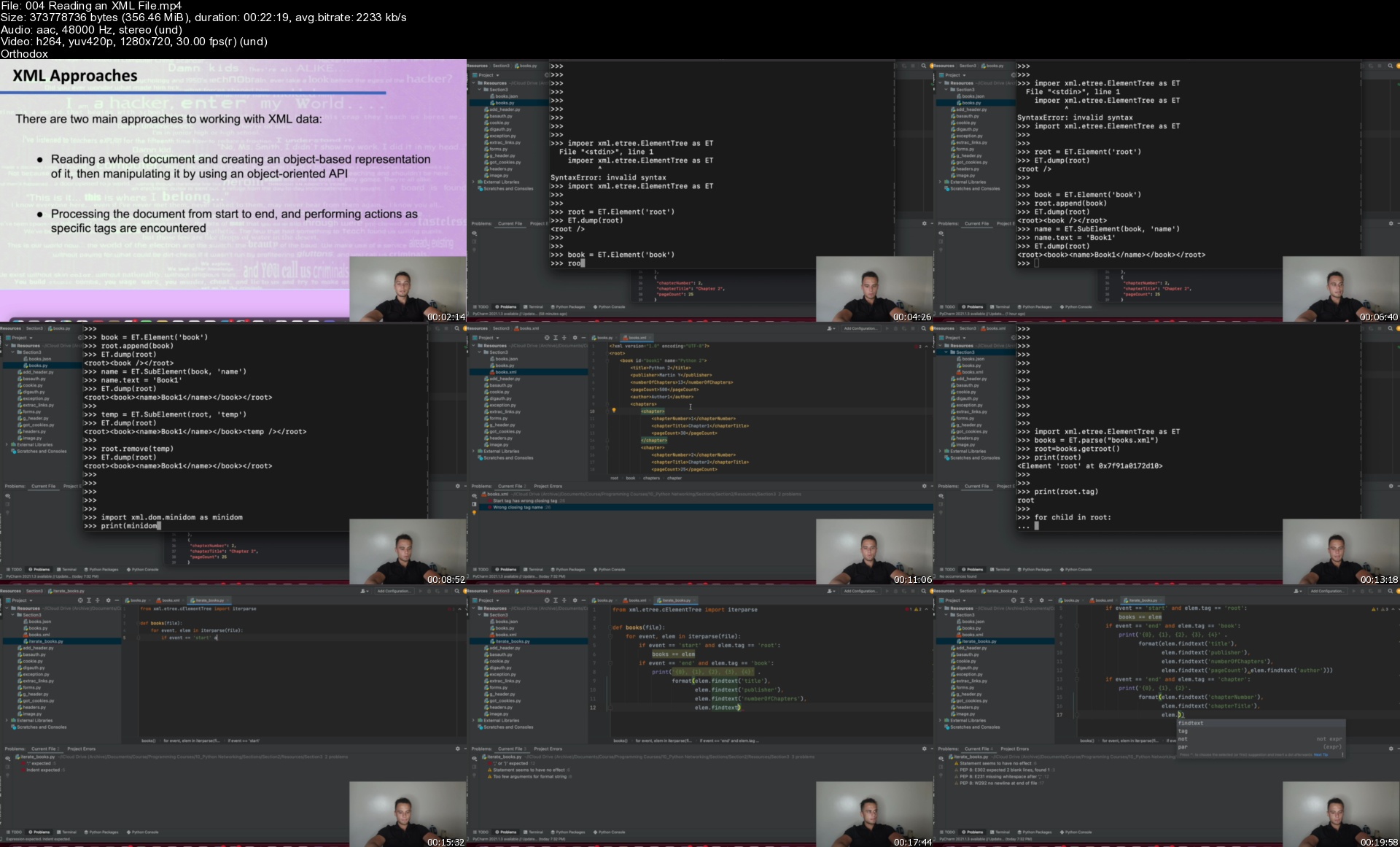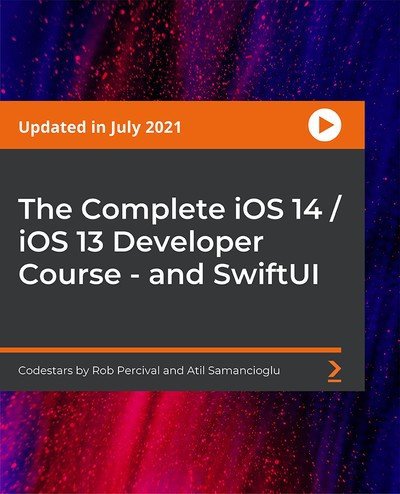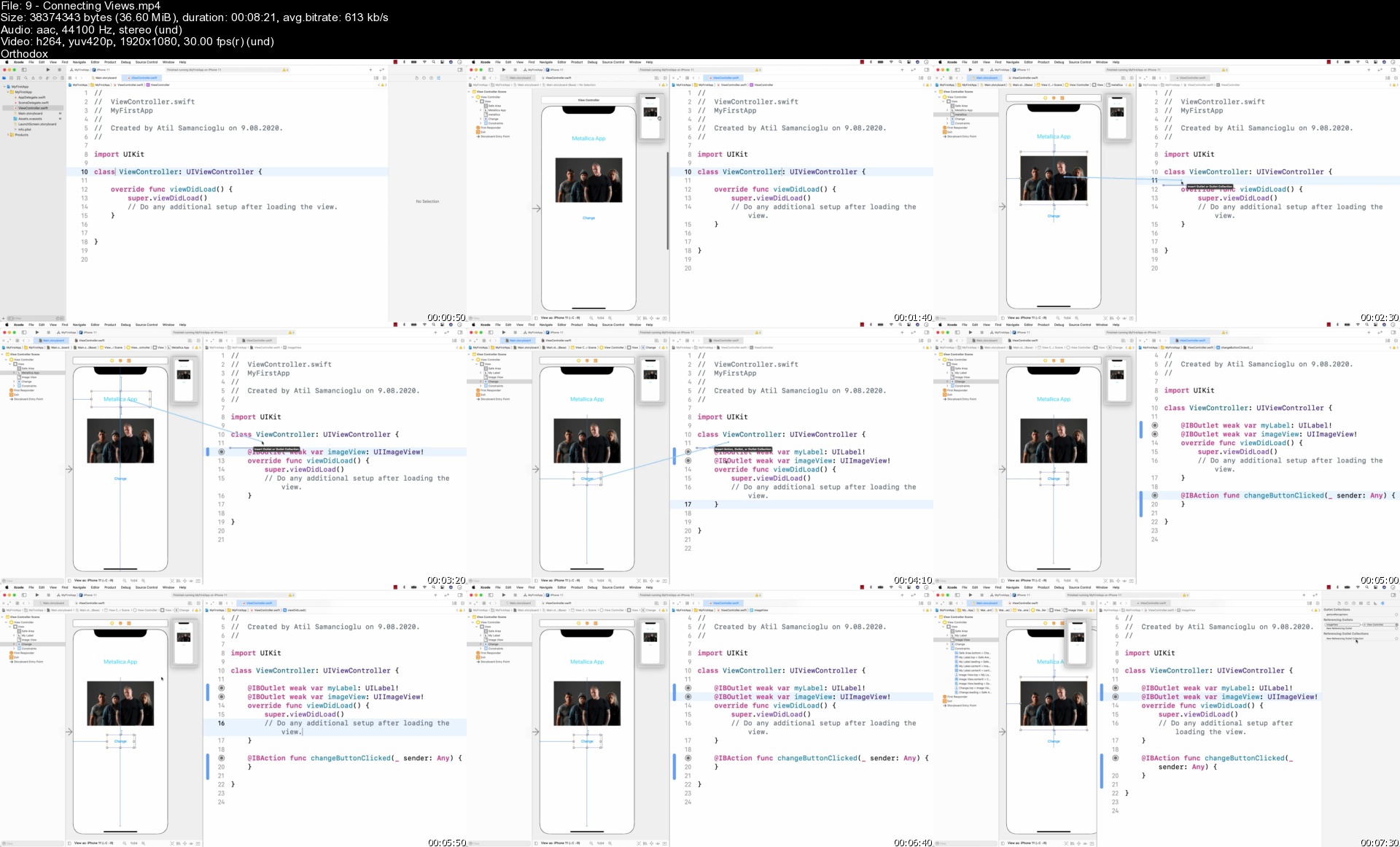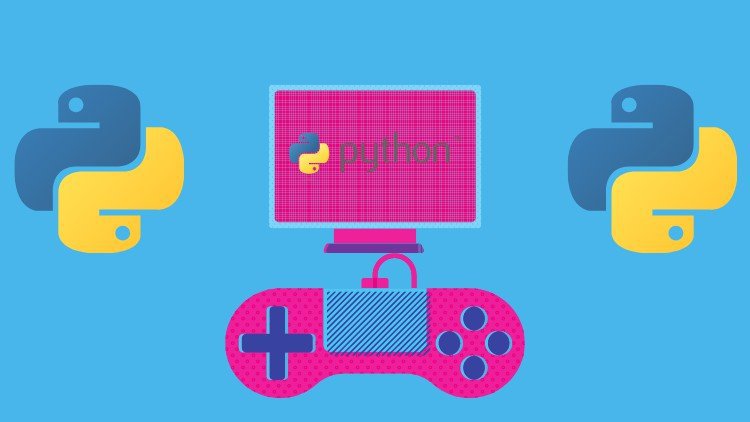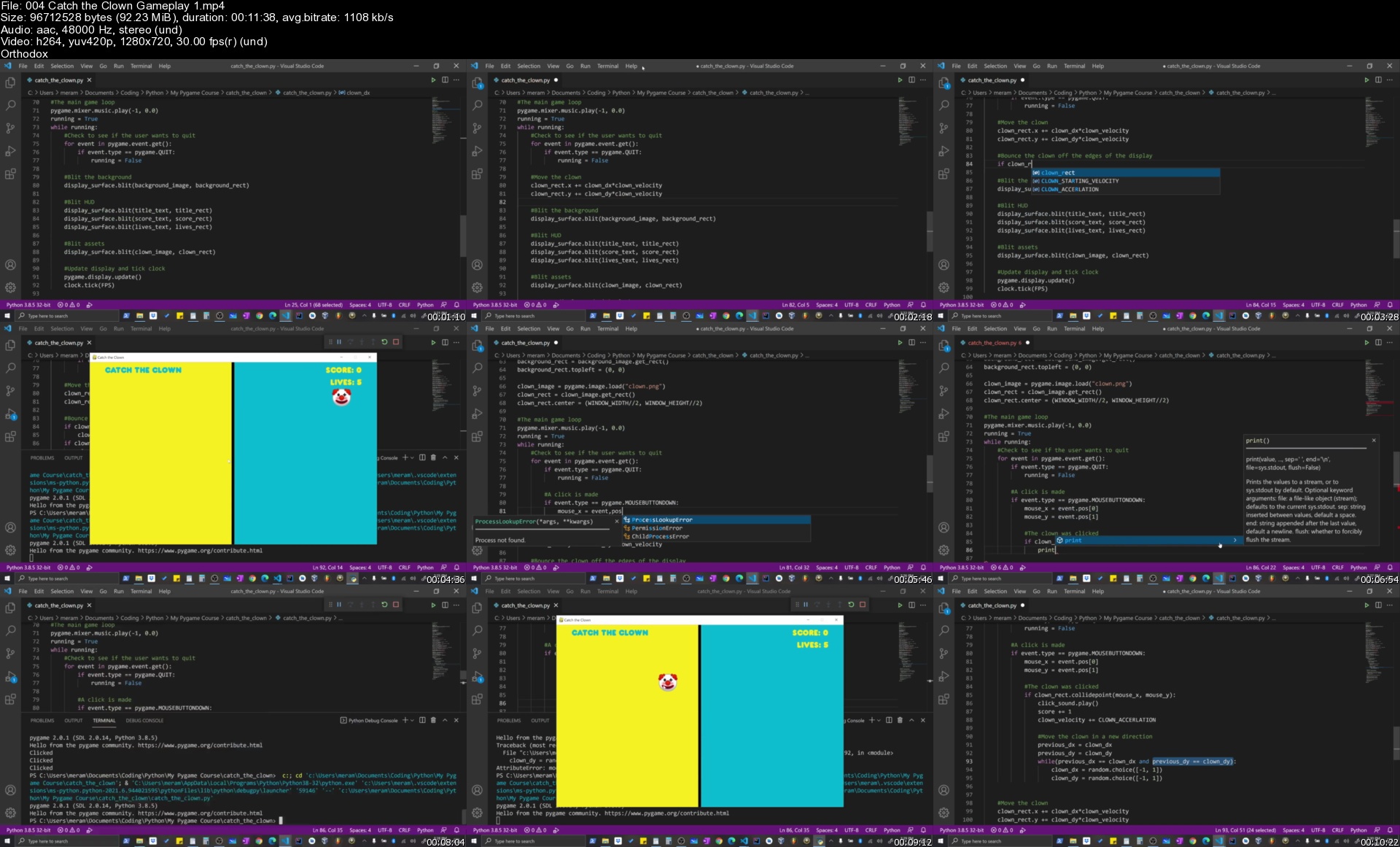AWS Certified Cloud Practitioner - Complete NEW Course 2021
AWS Certified Cloud Practitioner - Complete NEW Course 2021
Genre: eLearning | MP4 | Video: h264, 1280x720 | Audio: AAC, 44.1 KHz
Language: English | Size: 5.62 GB | Duration: 11h 58m
Get your AWS Certified Cloud Practitioner certification in 20 days! Includes guided hands-on exercises & practice exam
What you'll learn
MAXIMIZE YOUR TIME EFFICIENCY: We have structured the course so you get to learn at your own pace with theory lectures, guided practical hands-on exercises and exam cram lectures for quick revision of the important facts
FULL-LENGTH PRACTICE TEST: Assess your exam readiness and get familiar with the real exam format with 65 unique practice questions delivered in an exam simulation that is timed and scored
BONUS: Take the practice test in Training Mode (check your answers instantly - no time limit) on the Digital Cloud Training platform
QUIZZES: At the end of each section you get to review your knowledge with a total of 120 unique quiz questions that test your understanding
ACTIVE Q&A FORUM: In this discussion board, students ask questions and share their recent exam experience offering feedback on which topics were covered
RESPONSIVE SUPPORT: Our team of AWS experts respond to all of your questions, concerns or feedback
ALWAYS UP TO DATE: Our teachings reflect the latest CLF-C01 exam blueprint. All students have lifetime access to all future updates
PRESENTED IN A PROFESSIONAL WAY: Focused and to the point, clear language with professional subtitles
ALL DIAGRAMS, CODE AND SLIDES: Available for online viewing or download in PDF format
THE ULTIMATE EXAM PREP: We'll teach you everything you need to know to pass your exam first time
Description
100% UPDATED in MAY 2021: This AWS Certified Cloud Practitioner training course has just been completely updated with 100% new content for May 2021! The course is packed with comprehensive video lessons, hands-on labs, practice exam questions, quizzes and exam-crams! If you are new to Amazon Web Services / Cloud Computing and looking to confidently pass your AWS Cloud Practitioner Certification Exam first time - then this value-packed AWS training course is for you!
HOW THIS COURSE IS DIFFERENT
We have closely aligned this course with the official AWS Certified Cloud Practitioner exam guide and structured the course so that you can study at a pace that suits you best. We start with some basic background to get everyone up to speed on what cloud computing is and its benefits, before progressing through each knowledge domain.
We are big believers in using practical exercises to improve memory retention and contextualize knowledge, so we have included many hands-on guided practice exercises for those who have the time and desire to build a practical skillset. With this ALL-IN-ONE Udemy AWS cloud practitioner training, you'll be ready to pass the AWS Cloud Practitioner exam first time.
Watch the intro video to learn how this course will fast-track your exam success!
GET CERTIFIED IN 20 DAYS OR LESS
You get a free study guide in PDF format to help you plan your study so you can pass your AWS Certified Cloud Practitioner exam in 20 days or less! Dedicate around 1 hour every day to studying and you'll be ready to earn your first AWS certification in no time at all.
AWS Certified Cloud Practitioner Exam Guide (CLF-C01)
We created this course according to the AWS Cloud Practitioner CLF-C01 exam guide to ensure you're learning exactly what you need to know to pass your exam and work as a Cloud Practitioner. The course ensures you have the skills to answer questions from any of the four domains in the exam guide:
Domain 1: Cloud Concepts
1.1 Define the AWS Cloud and its value proposition
1.2 Identify aspects of AWS Cloud economics
1.3 List the different cloud architecture design principles
Domain 2: Security and Compliance
2.1 Define the AWS shared responsibility model
2.2 Define AWS Cloud security and compliance concepts
2.3 Identify AWS access management capabilities
2.4 Identify resources for security support
Domain 3: Technology
3.1 Define methods of deploying and operating in the AWS Cloud
3.2 Define the AWS global infrastructure
3.3 Identify the core AWS services
3.4 Identify resources for technology support
Domain 4: Billing and Pricing
4.1 Compare and contrast the various pricing models for AWS
4.2 Recognize the various account structures in relation to AWS billing and pricing
4.3 Identify resources available for billing support
BONUS OFFER - Practice Exam in Training Mode
We are now offering FREE access to the AWS Digital Cloud Training website (registration required with name and email) where you get to access your bonus practice exams in training mode (no time limit). This allows you to check answers after every question (not possible on Udemy) and will help you prepare for the exam.
PREVIEW THIS COURSE
There are many FREE previews so you can see how we teach the AWS Certified Cloud Practitioner (CLF-C01) exam blueprint using a combination of theoretical lectures and guided practical hands-on labs.
WHY THIS ULTIMATE EXAM PREP IS YOUR BEST CHANCE TO MAXIMIZE YOUR EXAM SUCCESS
HIGHLY FLEXIBLE COURSE STRUCTURE: We understand that not everyone has the time to go through lengthy lectures. That's why we give you options to maximize your time efficiency and accommodate different learning styles
THEORY LECTURES: You can move quickly through the course focusing on the theory lectures that 100% conform with the CLF-C01 exam blueprint - everything you need to know to pass your exam first attempt
GUIDED HANDS-ON EXERCISES: To gain more practical experience with AWS services, you have the option to explore our guided hands-on exercises - just create your own free tier account on AWS and you're good to go!
EXAM-CRAM LECTURES: Get through the key exam facts in the shortest time possible with our exam-cram lectures that you'll find at the end of each section
HIGH-QUALITY VISUALS: We've spared no effort to create a highly visual training course with lots of animated diagrams, tables and graphs to illustrate the concepts. All practical exercises are backed by logical diagrams so you can visualize what you're building.
120 QUIZ QUESTIONS: At the end of each section you get to review your knowledge with a total of 120 unique questions that test your understanding and measure your progress
FULL-LENGTH PRACTICE TEST: Simulate the real exam with a full-length Practice Test (65 unique practice questions). This practice exam is timed and scored mimicking the real exam environment so you get familiar with the AWS exam format, style and difficulty.
BONUS: Take the practice tests in Training Mode (check your answers instantly - no time limit) on the Digital Cloud Training platform
DETAILED EXPLANATIONS & REFERENCE LINKS: Every question includes deep-dive reference links and detailed explanations that explain why each answer is correct or incorrect
PRESENTED IN A PROFESSIONAL WAY: Your instructor (native speaker) uses clear and easy to understand language and presents the material in a professional way - focused and to the point with professional subtitles
ACCESS CODE, SLIDES AND EXAM CRAM PDF: Course slides and diagrams are available to view on SlideShare. Use the Exam Cram PDF download for last-minute exam preparation
ALWAYS UP TO DATE: Our teachings reflect the latest CLF-C01 exam blueprint. All students have lifetime access to all future updates
RESPONSIVE SUPPORT: Our team of AWS experts comprehensively respond to all of your questions, concerns or feedback
ACTIVE Q&A DISCUSSION BOARD: Join the discussion on AWS related topics in our discussion forum where our students share their recent exam experience offering feedback on which topics were covered
MOBILE ACCESS: Study on the go and access all resources from your mobile phone - anywhere, anytime
WHAT DO OTHER STUDENTS SAY?
Check out the excellent course reviews from our many students who passed their AWS exam with an average passing score of over 850!
"Best course ever for cloud computing. Takes you from scratch on how to use AWS and its core services."
"This course is the best course that I have come across. I can say it because I have gone through other AWS courses from different authors/vendors. Explained very well and it keeps you engaging."
"Wow, very clear and concise. Love the slides for the visual understanding and the labs for hands-on. I'm feeling confident in understanding how to get started and build an AWS network from the ground up. Thank you!"
BEGINNERS WELCOME
This AWS Cloud Practitioner training course is highly suitable for AWS beginners as we start with the basics of cloud computing and use a process of repetition and incremental learning to build practical skills and theoretical knowledge.
LEARNING METHODOLOGY
We break down the complexity of the topics into easy-to-digest and well-structured sections that are backed by logical diagrams that help you visualise your learnings. Following a simple and step-by-step approach, we'll take you from opening your first AWS Free Tier account through to launching the core AWS services, always sticking to the CLF-C01 exam blueprint. This ensures you're learning practical skills while effectively preparing for your exam. Our method ensures that you retain the knowledge - as repeated practice is the best way to learn and build your cloud skills.
WHAT EXACTLY WILL YOU LEARN?
In this AWS training course, you'll learn the fundamental concepts of cloud computing, what Amazon Web Services (AWS) is and how it can help companies in many different ways. You'll learn about the value proposition of AWS, the core services, pricing models and options, security in the cloud, and much much more.
The course includes the following topics:
Cloud Computing and AWS
Traditional IT and Cloud Computing
Examples and Benefits of Cloud Computing
Types of Cloud Service and Deployment
Overview of Amazon Web Services (AWS)
The AWS Global Infrastructure
The AWS Shared Responsibility Model
Application Programming Interfaces (APIs)
Launching Cloud Services
AWS Public and Private Services
The 6 Advantages of Cloud Computing
Identity and Access Management (AWS IAM)
AWS IAM Overview
IAM Users, Groups, Roles, and Policies
IAM Authentication and MFA
Service Control Policies (SCPs)
IAM Best Practices
AWS Compute Services
Computing Basics
Server Virtualization
Amazon Elastic Compute Cloud (EC2)
Amazon EC2 User Data and Metadata
Accessing Services - Access Keys and IAM Roles
AWS Batch
Amazon LightSail
Docker Containers and Microservices
Amazon Elastic Container Service (ECS)
AWS Storage Services
Block vs File vs Object Storage
Amazon Elastic Block Store (EBS)
Amazon EBS Snapshots and DLM
EBS vs Instance Store Volumes
Amazon Elastic File System (EFS)
Amazon Simple Storage Service (S3)
Amazon S3 Storage Classes
S3 Versioning, Replication and Lifecycle Rules
Archiving with S3 Glacier
AWS Storage Gateway
DNS, Elastic Load Balancing, and Auto Scaling
DNS and Amazon Route 53
Elasticity: Scaling Up vs Out
Amazon EC2 Auto Scaling
Load Balancing and High Availability
Amazon Elastic Load Balancer (ELB)
Scaling Policies
Application Services
Serverless Services
AWS Lambda Functions
Application Integration Services
Amazon EventBridge / CloudWatch Events
Amazon API Gateway
Amazon VPC, Networking, and Hybrid
Amazon Virtual Private Cloud (VPC)
Security Groups and Network ACLs
Public, Private and Elastic IP Addresses
NAT Gateways and NAT Instances
Amazon VPC Peering
Amazon VPN and AWS Direct Connect
AWS Transit Gateway
AWS Outposts
Deployment and Automation
Caching and Amazon CloudFront
AWS Global Accelerator
AWS CloudFormation
AWS Cloud Development Kit (CDK)
AWS Elastic Beanstalk
AWS Developer Tools (Code*)
AWS X-Ray
AWS OpsWorks
Databases and Analytics
Types of Database
Amazon Relational Database Service (RDS)
Amazon Aurora
Amazon DynamoDB
Amazon RedShift
Amazon Elastic Map Reduce (EMR)
Amazon ElastiCache
Amazon Athena and AWS Glue
Amazon Kinesis
And: AWS Data Pipeline, Amazon QuickSight, DocumentDB, Neptune, QLDB, Blockchain
Management and Governance
AWS Organizations
AWS Control Tower
AWS Systems Manager
AWS Service Catalog
AWS Config
AWS Trusted Advisor
AWS Health API and Dashboards
AWS Cloud Security and Identity
Identity Providers and Federation - SAML/WIF + SSO + Cognito
AWS Directory Service
Protecting Secrets - SSM Parameter Store and Secrets Manager
Encryption - AWS KMS, ACM, in-transit / at-rest
Logging and Auditing - Amazon CloudWatch Logs, CloudTrail, Flow Logs, ELB logs, and S3 logs
Detect and Respond - Amazon Detective, GuardDuty, Macie
Firewalls and DDoS Protection - AWS WAF & Shield
Compliance Services - AWS Artifact, Config
Security Management and Support - AWS Security Hub, Security Bulletins, Abuse Team
Penetration Testing
Architecting for the Cloud
AWS Well-Architected
AWS Well-Architected Framework
Accounts, Billing and Support
AWS Pricing Fundamentals
Amazon EC2 Pricing Options
Amazon EC2 Pricing Use Cases
Pricing for other AWS Services
AWS Support Plans
Consolidated Billing
AWS Cost Management Tools
Migration, Machine Learning and More
AWS Migration and Transfer Services
AWS Machine Learning Services
End User Computing
AWS IoT Core
YOUR INSTRUCTOR
Hi, my name is Neal Davis - I'll be your instructor for this ultimate exam training for the AWS Cloud Practitioner. Cloud Computing is my Passion - which is why I founded Digital Cloud Training - offering AWS certification training resources that represent a higher quality standard than is otherwise available in the market. I created this comprehensive training course so that you get to ace your AWS exam and achieve your career goals. I enjoy teaching on Udemy as it allows me to leverage my knowledge and hands-on experience that I have built over the last 20 years.Yes, I've been working in the Cloud space since its very beginning!
OUR SUCCESS IN NUMBERS
Over 500,000 students enrolled in our AWS courses
4.7 Star instructor ratings from over 50,000 reviews
Our students pass the AWS exam with an average score of over 85%
MONEY-BACK GUARANTEE
We are totally confident in the value of our Cloud Practitioner Exam Training which comes with a 30-day unconditional money-back guarantee. Fast-track your AWS exam success and get lifetime access now - risk-free!
Who this course is for:
Students preparing for the AWS Certified Cloud Practitioner exam who want to pass with confidence at first attempt
Candidates for the AWS exam who want to feel fully prepared and master the cloud with this comprehensive ALL-IN-ONE Training Course
IT Professionals who want to become qualified AWS Cloud Practitioners and enter any AWS technical Job interview with confidence
Anyone who is keen to take their AWS Cloud Career and salary to the next level with an AWS certification
Professionals who want to learn how to leverage the benefits of the AWS Cloud to demonstrate strong capability with AWS to (future) employers
Those who feel ready to work in a real-world environment and want to gain solid experience on AWS and master the AWS platform
Homepage

